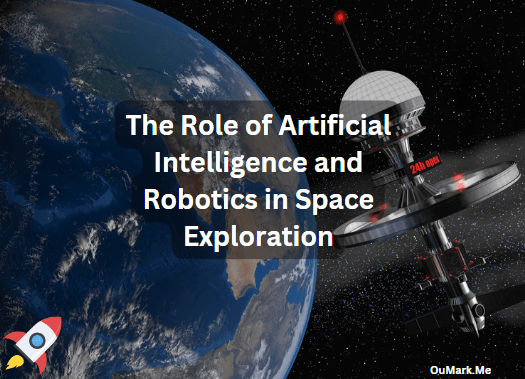The Role of Artificial Intelligence and Robotics in Space Exploration: Advancements, Challenges, and Future Possibilities
Introduction : The Intersection of AI, Robotics, and Space Exploration
Space exploration has always been a challenging and complex endeavor, requiring significant scientific and technological advancements to achieve progress. However, with the recent emergence of artificial intelligence (AI) and robotics, the possibilities for space exploration have expanded significantly. The integration of AI and robotics in space missions has opened new opportunities for improving safety, accuracy, and efficiency. In this article, we explore the advancements, challenges, and future possibilities of AI and robotics in space exploration.
Advancements in AI and Robotics in Space Missions :
AI and robotics have played a vital role in space missions, providing a range of benefits from automating routine tasks to enabling more advanced operations. One significant example of this is the Mars Curiosity Rover, which has been exploring the Martian surface since 2012. The rover uses AI algorithms to analyze the terrain and make decisions about its path, enabling it to navigate more safely and efficiently.
Similarly, AI and robotics have also been used to improve communication and collaboration between astronauts and ground control. For instance, NASA’s Robonaut 2 is a humanoid robot that was designed to assist astronauts with various tasks, such as maintenance and repairs. The robot’s advanced sensors and AI capabilities enable it to adapt to the environment and make decisions based on its surroundings.
Challenges and Limitations of AI and Robotics in Space Exploration :
Despite the potential benefits of AI and robotics in space exploration, there are also significant challenges and limitations that need to be addressed. One of the primary challenges is the complexity of developing and deploying advanced AI and robotics systems in space. The harsh and unforgiving environment of space can be challenging for even the most advanced technologies, making it difficult to ensure that the systems remain operational over long periods.
Additionally, there are limitations to the processing power and memory available in space technology. As a result, developing AI and robotics systems that can operate effectively and efficiently with these limitations can be a significant challenge.
Future Possibilities and Innovations in Space Exploration through AI and Robotics :
Despite the challenges, the possibilities for AI and robotics in space exploration are vast. One promising area of development is the use of autonomous systems that can operate independently without the need for direct human intervention. These systems could be used to perform tasks such as exploration, maintenance, and repairs, freeing up human resources for more complex tasks.
Another area of potential innovation is the use of swarm robotics, which involves the deployment of large numbers of small robots that can work together to accomplish tasks. This approach could be used to explore large areas of space more efficiently and to perform tasks that would be too challenging or dangerous for individual robots.
Conclusion :
The Role of AI and Robotics in Shaping the Future of Space Exploration
In conclusion, the integration of AI and robotics in space exploration represents a significant advancement in the field. While there are challenges and limitations to be addressed, the possibilities for innovation and progress are vast. As we continue to explore the universe, the role of AI and robotics in space missions will become increasingly important, enabling us to achieve new discoveries and breakthroughs.
